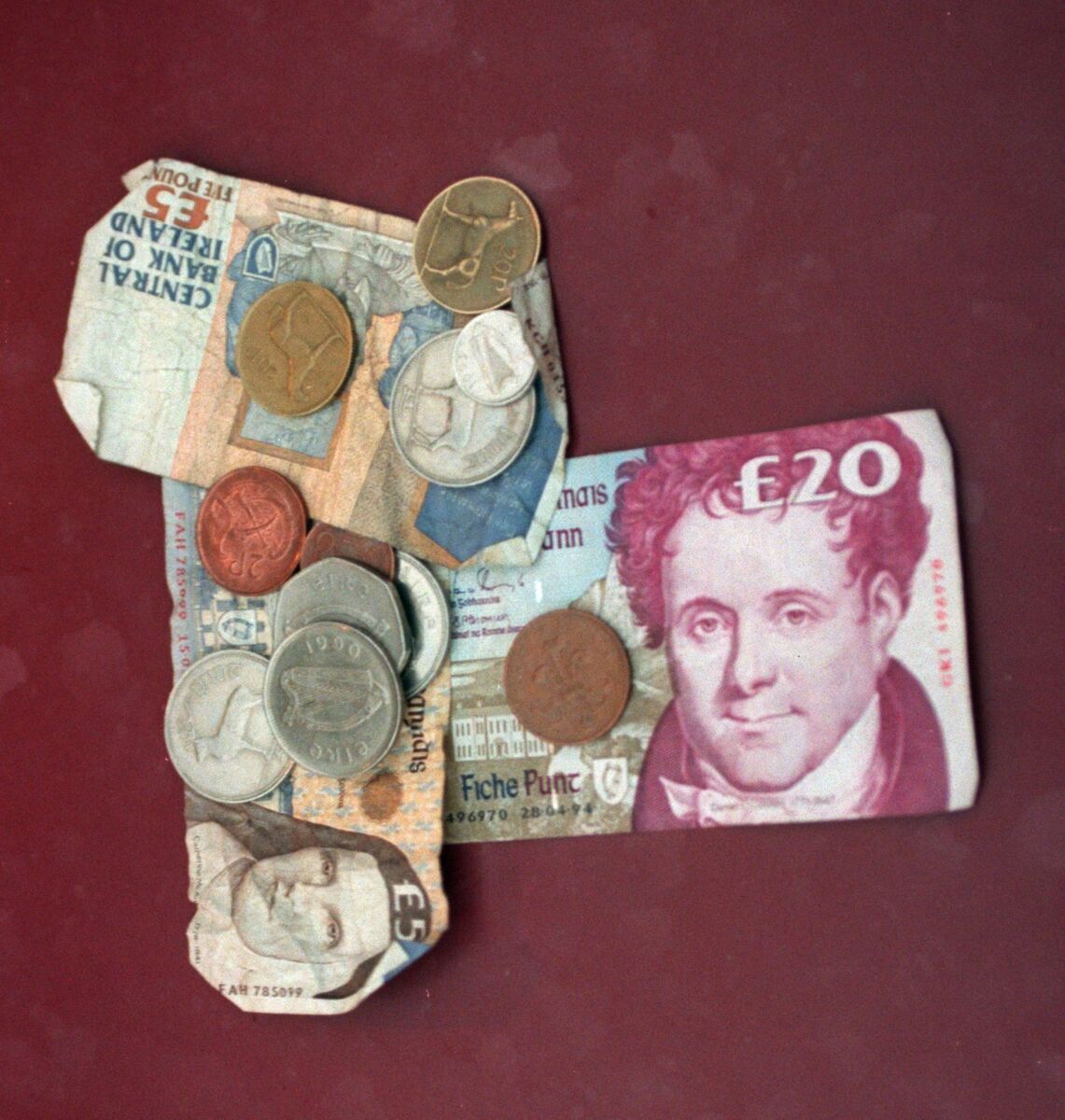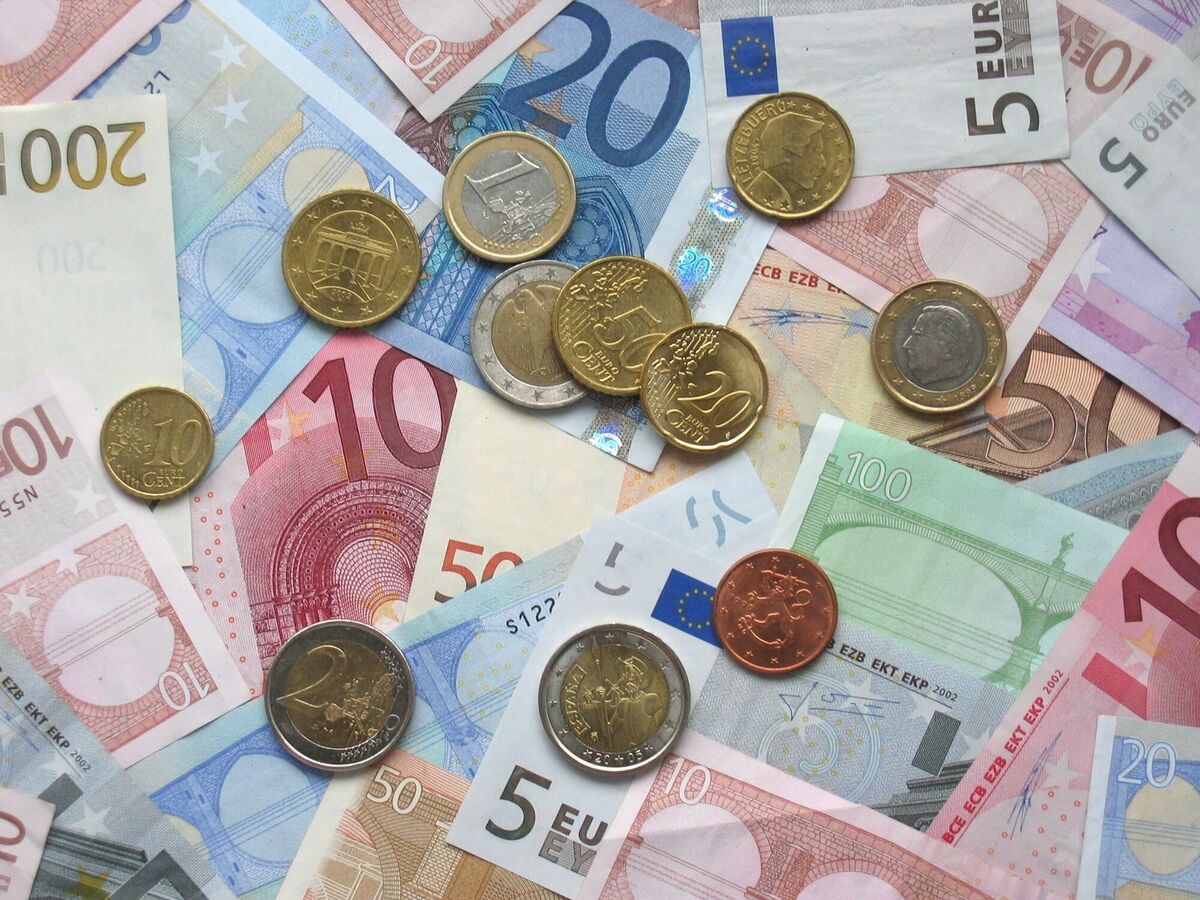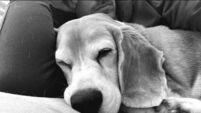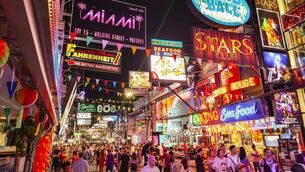Séamas O'Reilly: To anyone who used old Irish coins, the UK's new designs may seem familiar

The reserve, left, and observe, faces of a one-pound coin displayed by the Royal Mint in London, UK, on Thursday, Oct. 12, 2023.
Since the Queen of England’s death nearly two years ago, the UK’s money has retained her image, presumably because the government believed the psychic shock of changing it any sooner would’ve been too much for the country to bear. They might be right.
It would stretch things to describe my feelings for the British royal family as fond, but even I would find it odd to see someone else staring out at me, after a lifetime spent looking at Elizabeth Windsor any time I had to put cash in my hand.
For the devoted, changing those coins and notes any time before now might have been too seismic a change — insensitive even, like those parents who wait two weeks after their child flies the nest, before tearing down their bedroom and turning it into a home gym.
But there is, forgive me, a flipside to that coin, a point at which the time is right to move on, lest your whole country comes off like a serial killer who’s kept their mother’s bedroom in the same state since she passed, some decades ago.
That time appears to be now, as this week we saw the first coins featuring King Charles’ face enter circulation.
The new £1 coin shows the king in side profile, his nose pointing left. One might be tempted to presume this is a tribute to his hero, Padraig Pearse, but it is simply the usual protocol for regents depicted on money to flip direction.
Queen Elizabeth faced right because her father, George VI faced left.
Interestingly — I will admit that ‘interesting’, here, is relative — his predecessor Edward VIII bucked this trend, and insisted on facing left, solely because he preferred the way his face looked when doing so, a move I can only applaud because what’s the point of being king if you can’t treat the Royal Mint like a boyfriend who’s taken terrible pictures of you for your Instagram.
To be honest, there’s not many new things you can do with money, but Charles has achieved some novelty by allocating the reverse of his £1 coin to an image of two humble bees.
This is in keeping with the broader suite of coins, which depict a hazel dormouse (1p), a red squirrel (2p), an oak tree leaf (5p), a capercaillie (10p), a puffin (20p), a salmon (50p), and the national flowers of the constituent parts of the UK (£2).
This slew of flora and fauna is intended to highlight biodiversity loss, reflecting Charles’ enthusiasm for nature. But for those of us familiar with Irish coinage of the 20th century, they may seem familiar for another reason.

I refer, of course, to the charming, and oft-missed old currency of the Irish Republic, which also depicted salmon, as well as stags, hares, woodcocks, and some pleasingly inscrutable ornamental designs of birds on the coppers, which I could never quite puzzle out.
As a new country, forged in rebellion, these peaceful and sedate designs were themselves quite novel.
I’m probably more intrigued by them than many of you reading this, because I saw them so rarely.
Growing up in the north of Ireland, the jackboot of British imperialism had, in one of its harsher crimes, robbed us of coins featuring fish and cows and kept its altogether inferior currency rigidly in place.
I did grow up on the border, but so far from a shop that it was only on rare occasions that paying for things in airgead na hÉireann was required. As one of 11, in a family for which a tradition as fiscally ruinous as “pocket money” was never entertained, handling currency was not something I did often as a child.
By the time I was more likely to have a few quid of my own, I was a teenager, by which time the euro had already been introduced.
My memories of using punta agus pinginí stem mostly from holidays in Bundoran and Westport, of aunties gifting me strange coins (equal to or under £1) so I could run riot in flat-carpeted amusement arcades that smelled of chips and fags, or regional funfairs that featured airbrushed likenesses of Muhammad Ali, Arnold Schwarzenegger, and Joe Dolan sprayed on the sides of rusted big wheels which groaned and threw sparks as they spun.
Even then, any time with these coins was short, since these establishments would uniformly have a kiosk at the entrance which took that hard-earned, funny-looking money and traded it for proprietary tokens of their own devising.
These plastic discs seemed no more odd or unfamiliar to my childish eyes than those I’d just handed over.

There was a magic to them, all the same. The fact that they seemed like coins designed for children.
I’m not the first to say it, but there is little of the same whimsy to the euro, whose notes are utilitarian and bloodless, all pastel colours and homogenised typography.
Even now, two decades after their introduction, they seem like prop money for a sci-fi movie written by an accountant.
Nowhere is this more apparent than in the architectural drawings of bridges on the back of each note.
These were intended as a VERY SUBTLE metaphor about the benefits of international co-operation and, for years, I presumed they depicted famous bridges found in the EU’s founder nations. They do not.
They’re entirely invented structures, designed to embody a vague ideal of European engineering, without performing the tricky task of picking and choosing the buildings of one nation over another.
As such, they have no real-world equivalent at all, or at least they didn’t until 2011. That was when Dutch artist Robin Stam decided he would build replicas of each of these fake bridges to service a new housing development in the Dutch city of Spijkenisse, near Rotterdam, where they stand to this day.
Thus, a city the size of Galway is now retroactively memorialised on the currency used by 350m people every day.
There’s not too many new things you can do with money, so we should be glad when people find a way.






